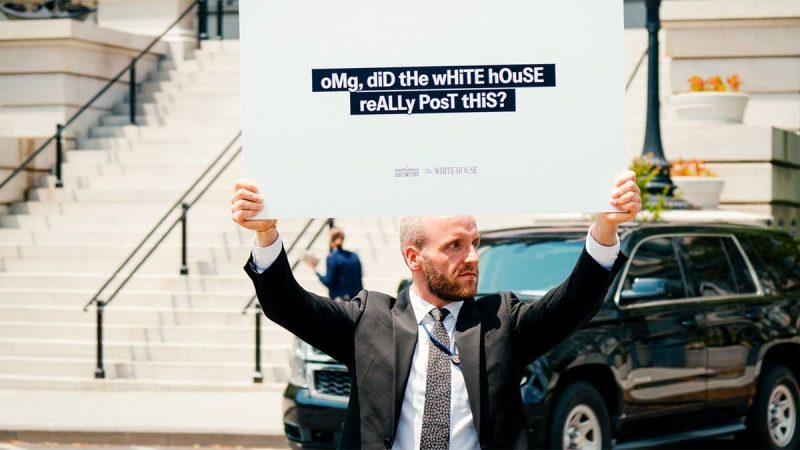
‘oMg, diD tHe wHiTE hOuSE reALLy PosT tHis?’
That became one of the most common reactions across the White House’s feeds. The answer was always yes.
Serving as director of digital content for President Donald Trump was the most meaningful and intense chapter of my professional life. From the moment we rebooted the administration’s online presence on Inauguration Day, the mission was clear: speak in a voice that resonated with real Americans and make sure our MAGA message could not be ignored.
We did not build a cautious, government-style account. We built a fast, culturally fluent content machine designed to cut through the noise and win online. And it worked.
In just six months, the administration’s platforms added over 16 million new followers, with the fastest growth among Americans aged 18–34. We generated billions of video views and gained more than half a million new YouTube subscribers – nearly triple the previous administration’s total growth over four years.
But it was never just about numbers. Our success came from echoing the humor, passion and identity of a movement that was already alive. We did not invent the culture. We gave it a megaphone.
This was not entertainment for entertainment’s sake. Our meme-heavy, content-first strategy was aligned with the president’s priorities. Digital was not a sideshow. It was a frontline tool for shaping narratives, building momentum, and applying pressure.
That was clearest during the push for President Trump’s One Big Beautiful Bill Act. We were not writing legislation. We were making sure Americans understood what was at stake. We turned policy into content people wanted to share – and that shifted the conversation.
That agility was only possible because of President Trump. His decisiveness gave us the freedom to move fast and take risks. Whether it was an ASMR-style video of deportations, a Jedi Trump with a bicep vein battling the deep state, or a surreal ‘Make It Rain’ Gemini AI-generated storm of cash over the White House, every post had intention. Every choice matched the cultural moment.
These were not random stunts. They were designed to draw younger Americans, many of whom had tuned out politics, back into the conversation. And it worked.
We did not wait to react to headlines. We inspired them. From the 100-day mugshot display on the North Lawn to anime-style fentanyl dealers crying on camera, we pushed the boundaries of political communication.
Major media outlets took notice. Even Democrats are playing catch-up. Gavin Newsom has pretty much stolen podcasts, memes and trolling tactics that came straight from the MAGA playbook. That is not coincidence. That is proof of impact.
Here is the truth. We did not go viral because we were chasing virality. We went viral because we paid attention. We knew our audience. We stayed sharp on the message. And we operated like creators, not bureaucrats.
That kind of approach takes a rare team. The White House digital staff I had the honor to serve with are some of the smartest and most imaginative minds in politics today. They understand what many still miss: politics and culture are inseparable. You move them together or you do not move them at all.
I have full confidence in the team under White House deputy communications director Kaelan Dorr to continue winning, and as Dorr put it best: ‘The arrests will continue. The memes will continue.’
As I step away from my role at the White House and return to leading my public relations and digital firm, I do so with pride. We did not just manage accounts. We reinvented how people experience the presidency online. Others are only now beginning to understand that reality. We will continue to lead – because we not only understand the tools. We understand the Americans who use them.






